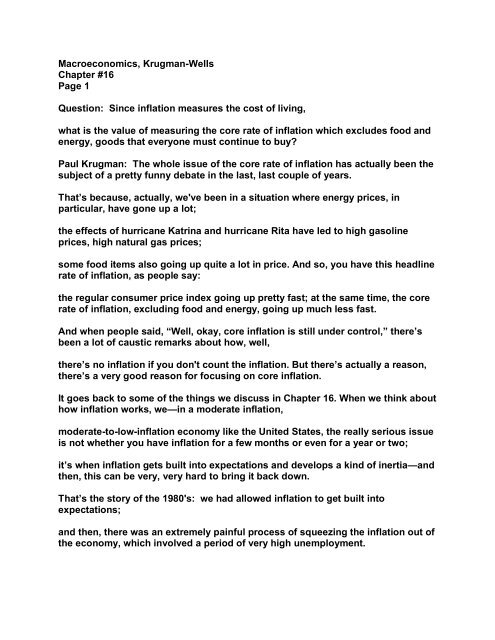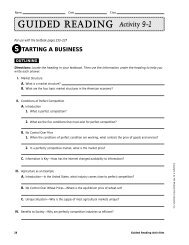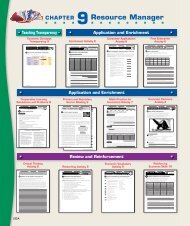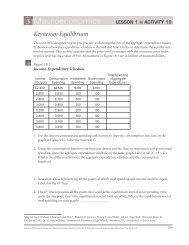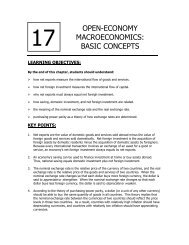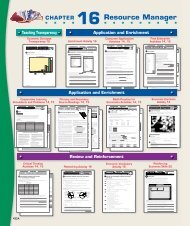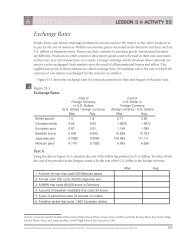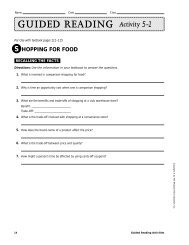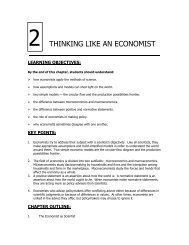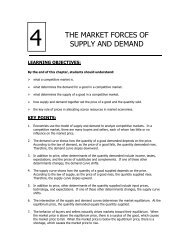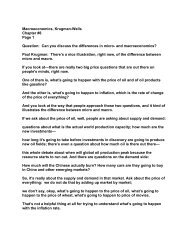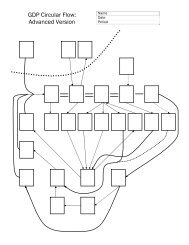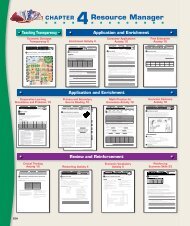Macroeconomics, KrugmanWells Chapter #16 Page 1 ... - Rasco.name
Macroeconomics, KrugmanWells Chapter #16 Page 1 ... - Rasco.name
Macroeconomics, KrugmanWells Chapter #16 Page 1 ... - Rasco.name
You also want an ePaper? Increase the reach of your titles
YUMPU automatically turns print PDFs into web optimized ePapers that Google loves.
<strong>Macroeconomics</strong>, KrugmanWells<br />
<strong>Chapter</strong> <strong>#16</strong><br />
<strong>Page</strong> 1<br />
Question: Since inflation measures the cost of living,<br />
what is the value of measuring the core rate of inflation which excludes food and<br />
energy, goods that everyone must continue to buy?<br />
Paul Krugman: The whole issue of the core rate of inflation has actually been the<br />
subject of a pretty funny debate in the last, last couple of years.<br />
That’s because, actually, we've been in a situation where energy prices, in<br />
particular, have gone up a lot;<br />
the effects of hurricane Katrina and hurricane Rita have led to high gasoline<br />
prices, high natural gas prices;<br />
some food items also going up quite a lot in price. And so, you have this headline<br />
rate of inflation, as people say:<br />
the regular consumer price index going up pretty fast; at the same time, the core<br />
rate of inflation, excluding food and energy, going up much less fast.<br />
And when people said, “Well, okay, core inflation is still under control,” there’s<br />
been a lot of caustic remarks about how, well,<br />
there’s no inflation if you don't count the inflation. But there’s actually a reason,<br />
there’s a very good reason for focusing on core inflation.<br />
It goes back to some of the things we discuss in <strong>Chapter</strong> 16. When we think about<br />
how inflation works, we—in a moderate inflation,<br />
moderatetolowinflation economy like the United States, the really serious issue<br />
is not whether you have inflation for a few months or even for a year or two;<br />
it’s when inflation gets built into expectations and develops a kind of inertia—and<br />
then, this can be very, very hard to bring it back down.<br />
That’s the story of the 1980's: we had allowed inflation to get built into<br />
expectations;<br />
and then, there was an extremely painful process of squeezing the inflation out of<br />
the economy, which involved a period of very high unemployment.
<strong>Macroeconomics</strong>, KrugmanWells<br />
<strong>Chapter</strong> <strong>#16</strong><br />
<strong>Page</strong> 2<br />
Most economists working in this area (certainly, the economists at the Federal<br />
Reserve) believe that the core rate of inflation,<br />
leaving out the food and energy prices, is a better measure of the part of inflation<br />
that's got inertia—the part that once it's gotten up is hard to get back down.<br />
The idea is that nobody thinks that the result, the inflation that results from the<br />
price of gasoline going from two dollars to three dollars temporarily,<br />
as the result of a hurricane—nobody is going to build that into their expectations.<br />
But a more sustained increase in prices that doesn't reflect food and energy,<br />
that reflects all kinds of things, is a much better measure of the kind of thing that<br />
once you got that up there, it's hard to get back down.<br />
So, if the inflation rate goes briefly from two to four percent because of food and<br />
energy—no problems.<br />
If the inflation rate goes from two to four percent because, even though food and<br />
energy prices have been going no place in particular,<br />
that’s much more of a source of worry because it may be quite difficult to get<br />
those extra two points of inflation back out of the system.


